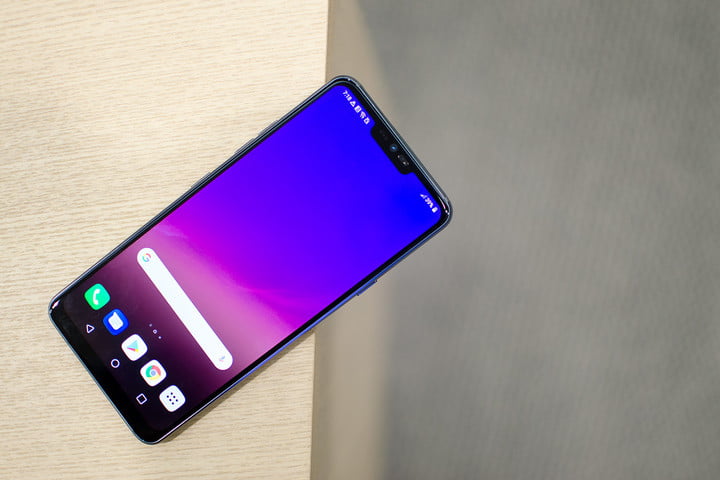Creating a backup is great, but what about how to restore it? Today’s tutorial walks you through the step by step process on how to restore your previously created Nexus 6 Nandroid backup.
Getting into the habit of creating recent Nandroid backups for your Nexus 6 is only part of the equation. What happens if something messes up and you actually need to restore from said backup. That is what today’s tutorial is about and thankfully TWRP makes this a rather easy task.
It should be known that when you restore from a previously created Nandroid backup, you will lose any of the data that you have created since that last backup. That is, any of your data except what has been put into your Download folder.
This internal storage data is left untouched so you don’t need to worry about losing anything from there. In fact, we’re leaving your entire ‘Internal Storage’ partition alone in this process. The only thing we’re restoring is the Android’s core partitions because this is generally what has cause something to go wrong. For example, if you flash a custom kernel that has caused a bootloop, you only need to restore the Android core partitions in order to fix it. You could actually flash the stock kernel to fix it as well, but that makes things a little more complicated and I’ll leave that for a future topic of discussion.
So, if you are looking to restore from a Nandroid backup, it is safe to assume that you have already unlocked the bootloader of the Nexus 6. You should also have rooted the Nexus 6 already, and you have already installed a custom recovery onto your Nexus 6. We’re also assuming that you have already created a Nexus 6 Nandroid backup as discussed in yesterday’s tutorial. If you haven’t, then you need to follow those tutorials before you start with this one.
Nexus 6 Restore Backup
- Boot the Nexus 6 into Recovery Mode
- Tap on the ‘Wipe’ Option
- Then Tap on the ‘Advanced Wipe’ Option
- From Here, Make Sure the Following Partitions are Checked. . .
- Dalvik Cache, System, Data, Cache
- You Want to Leave the ‘Internal Storage’ Option Unchecked
- When Ready, Swipe the Arrow at the Bottom to the Right
- Wait Until the Partitions Have Been Wiped
- When Completed, Tap the Home Button at the Bottom
- At the TWRP Main Menu, Tap on the ‘Restore’ Option
- Then Tap on the Nandroid Backup You Want to Restore From
- Make Sure all Available Partitions are Checked
- When Ready, Swipe the Arrow at the Bottom to the Right
- Wait Until the Process is Complete
- When Done, Tap the ‘Wipe Cache’ Option
- Then Tap on the ‘Reboot’ Option
Explanation
Again, before you even start to restore from a Nandroid backup, you need to have all the required parts done that are discussed earlier in this tutorial. If you make a mistake and forgot that you haven’t previously created a Nandroid backup, then already wipe the Nexus 6, you will have to do a factory reset and set everything back up like you had just pulled the device out of the box. As long as you are ready to proceed, go ahead and boot up into the Nexus 6 recovery mode.
What we want to do first is wipe the bad partitions clean. So tap on the ‘Wipe’ option and then tap on the ‘Advanced Wipe’ option. Here, you will find the available partitions that you can modify. I do this so that we can make sure to have a clean restore so let’s go ahead and select the ‘Dalvik Cache, System, Data, Cache’ partitions. You can leave all the other partitions alone here(and unchecked). Just make sure those four partitions are checked. When you are ready, go ahead and swipe the blue arrow at the bottom of the screen all the way to the right. It will take a little time to wipe those partitions so just be patient.
When the process has finished, tap on the Home button so you can go back to the TWRP main menu. Now, you want to tap on the ‘Restore’ option and from here you should see a list of your previously created Nandroid backups. If you followed my advice in the previous tutorials, then you should have your backups labeled so that you know exactly which one is the most recent. Unless you think something might be wrong with the most recent backup, go ahead and tap on the most recent backup that you see in the list. You’ll see a list of partitions for this backup and you should make sure all of them are selected(checked).
When you are ready to restore from this backup, you just have to swipe the blue arrow at the bottom of the screen all the way to the right again. Again, this process can take some time so please be patient. When it has finished, you’ll see some buttons appear below the text that was scrolling. Tap on the ‘Wipe Cache’ button so that all of the old cache data has been deleted. This step probably isn’t required, it’s just something that I have gotten in the habit of doing. After the cache has been wiped, tap on the ‘Reboot’ option and your Nexus 6 should be rebooted back into the Android OS. This should take you to the exact point where you had created that specific backup.
As always, if you run into any troubles with this tutorial, or if you have any questions about it, go ahead and leave a comment at the bottom of this page. I might not be able to reproduce the exact issue you are having, but my Google-Fu is pretty strong so I will at least try to find an answer for you.



